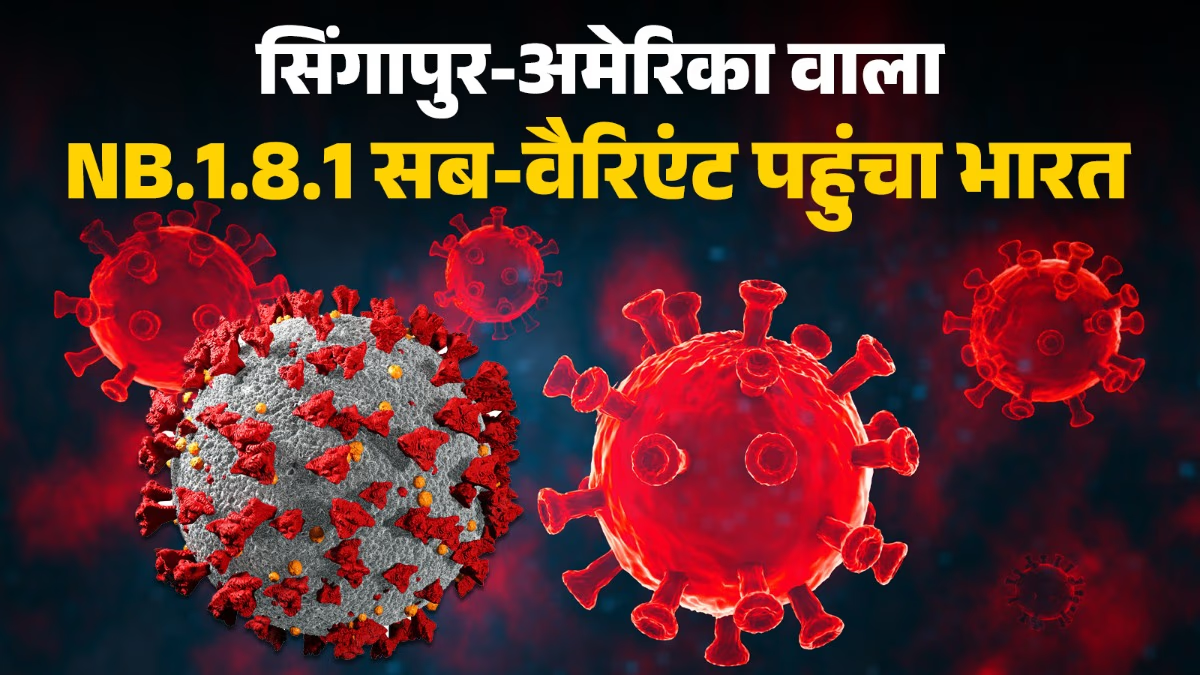COVID-19 Cases Surging in India:
In Southeast Asia, COVID-19 cases are on the rise again, and India is witnessing a similar increase. Infections have predominantly surfaced in Karnataka, Maharashtra, Uttar Pradesh, Delhi, and West Bengal. According to the Ministry of Health’s website data, as of May 27, India has recorded 1,010 active COVID-19 cases. The highest number of cases were from Kerala, followed by Maharashtra, Delhi, Gujarat, and Tamil Nadu. Cities like Mumbai, Chennai, and Ahmedabad exhibit a modest yet steady rise, leading local authorities to boost surveillance and implement precautionary measures. The new NB.1.8.1 sub-variant has also emerged in India. However, experts assure there’s no cause for panic. Discover what makes this variant unique and its contagious nature.
NB.1.8.1 - Responsible for New Cases
In Singapore, health officials share that LF.7 and NB.1.8.1, the two descendants of the JN.1 lineage, account for over two-thirds of local cases. They clarify that these variants show no signs of being more transmissible or causing severe disease compared to previously circulating variants. Earlier this month, with a rise in cases, Singaporean authorities predicted periodic COVID-19 waves throughout the year.
Identifying NB.1.8.1
First detected in China, NB.1.8.1 is a sub-variant of the Omicron lineage JN.1, linked to recent case increases, especially in Asia. It’s also been identified in Singapore, Hong Kong, and the USA. In India, its first detection was in April 2025 in Tamil Nadu. The World Health Organization (WHO) has classified it as a 'Variant Under Monitoring' (VUM), meaning it’s carefully tracked, although not yet of significant concern.
Genetic Mutations in NB.1.8.1
The first case of NB.1.8.1 was reported on January 22, 2025. The WHO is observing this new COVID-19 variant as cases rise globally. Originating from the XDV.1.5.1 strain, NB.1.8.1 features distinct genetic mutations setting it apart from Delta and Omicron variants. These mutations may influence how the virus spreads, interacts with the immune system, and responds to vaccines. Continued research is necessary, but its classification as 'Variant Under Monitoring' indicates a need for vigilance.
How is NB.1.8.1 Spreading?
Reports indicate NB.1.8 has driven spikes in Asia's COVID-19 cases in Singapore, Hong Kong, and the USA, suggesting a more rapid spread compared to older variants. Unlike the severe waves caused by Delta or early Omicron strains, infections from NB.1.8 appear milder, with no evidence of increased hospital admissions.
How Contagious is NB.1.8.1?
Initial reports suggest NB.1.8.1 results in symptoms akin to a common flu or mild COVID-19. Most patients recover quickly at home without needing hospitalization, unlike previous variants like Delta, notorious for severe illness and higher mortality rates, particularly among unvaccinated individuals.
Vaccine Effectiveness Against NB.1.8.1?
Experts maintain that current vaccines and treatments remain effective against these new variants. Health authorities emphasize the importance of vaccination and booster shots to maintain protection. NB.1.8.1 shows no signs of evading immunity from vaccines or prior infections. Some professionals propose focusing new vaccines on related variants like LP.8.1, which could offer even more robust protection.
India and the NB.1.8.1 Variant: Should We Worry?
The Indian government and health agencies actively monitor the situation through genomic surveillance programs, such as the Indian SARS-CoV-2 Genomics Consortium (INSACOG). Dr. Rajiv Bahl, Director-General of the Indian Council of Medical Research (ICMR), assured, 'Severity is generally low. There's no reason for immediate concern. Stay alert and be prepared. No immediate actions needed; general precautions suffice.'




